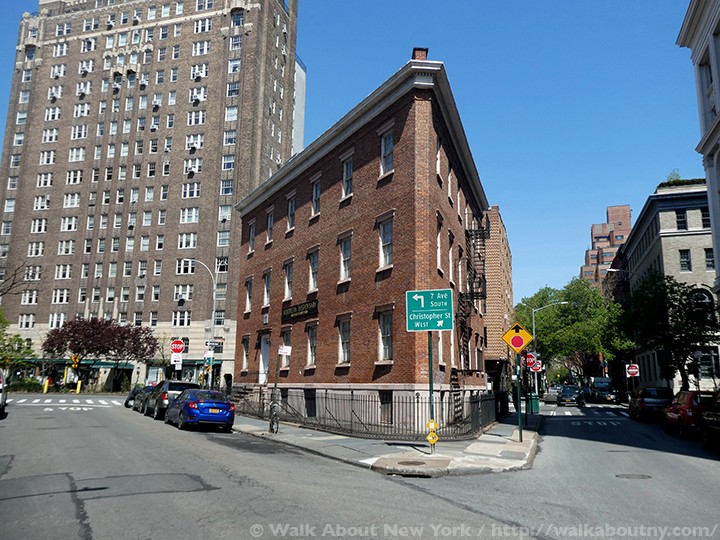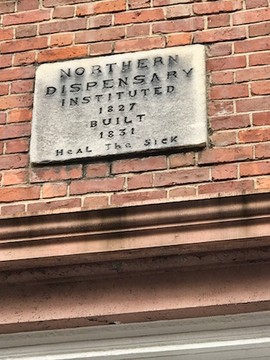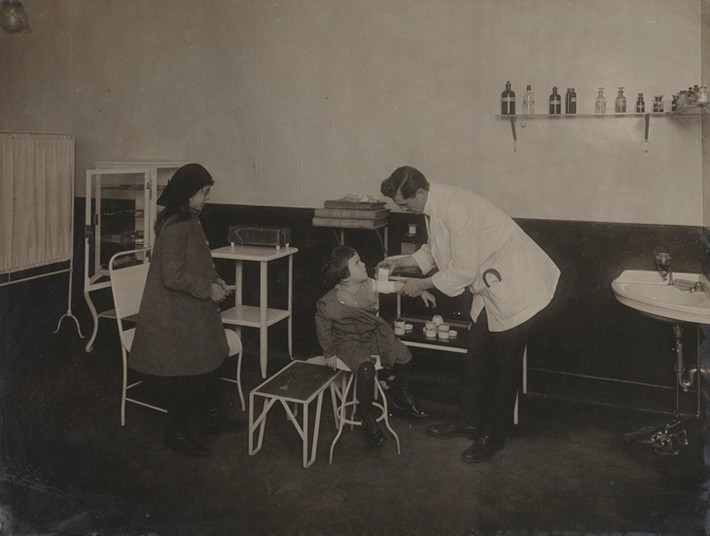Northern Dispensary Building
Introduction
Text-to-speech Audio
Images
The triangular Northern Dispensary building


A child being treated at the Northern Dispensary in the early 1900s

Backstory and Context
Text-to-speech Audio
In the early 1800s, the population of Greenwich Village was increasing, and most of the area's residents were the working poor. The crowded neighborhoods and unsanitary conditions led to the spread of diseases, and in 1827, residents and local doctors founded a free medical clinic. It initially operated out of temporary facilities, but in 1831, a permanent location--the building that still occupies the intersection of Grove, Christopher, and Waverly Place--was built. The building was called the Northern Dispensary because it occupied what was then the northernmost reach of the city.
As the number of residents in Greenwich Village increased, so did the number of patients who were treated at the clinic. (One of them, reportedly, was Edgar Allan Poe, who was treated for a cold.) By the mid-1800s, the clinic was treated enough patients each year that a third floor was added to the original two-story structure. A subtle change in the color of the bricks between the second and third floors can still be seen on the building's facade.
By the 1960s, the clinic was being used primarily for dental care. But in 1986, the clinic refused dental care to writer George Whitmore, who had AIDS. At the time, New York City could have arguably been described as the country's epicenter of the AIDS epidemic, and many of the city's cases were centered in Greenwich Village. Whitmore sued the clinic, which was ultimately fined by the city's Human Rights Commission. In 1989, the clinic announced that it was closing because of financial pressures.
The following year, the Roman Catholic Archdiocese of New York purchased the building with plans to convert it into a 15-person nursing home for homeless AIDS patients. Suprisingly, given the high rates of infection in the Village, a number of residents banded together to oppose the move. The plan was eventually abandoned and the Archdiocese sold the property to William Gottleib, a reclusive Manhattan investor notorious for buying properties and doing nothing with them. Gottleib died a year after buying the building, which has sat vacant since 1998. As recently as 2017, the property is still owned by the Gottleib estate, and it is unclear what will become of the building. The restrictive deed, which requires that it only be used to aid the poor, limits the possibilities for the historic property.
Sources
Herman, Gabe. Gottleib Co., Getting Active, but not on Northern Dispensary , AmNY. January 3rd 2019. Accessed November 27th 2020. https://www.amny.com/news/gottlieb-co-getting-active-but-not-on-northern-dispensary/.
Miller , Tom . The Northern Dispensary--Greenwich Village , Daytonian in Manhattan. April 14th 2010. Accessed November 27th 2020. http://daytoninmanhattan.blogspot.com/2010/04/northern-dispensary-greenwich-village.html.
Bhaman , Salonee . Who is the Village For? The Troubled History of the Northern Dispensary , Gotham Center for New York City History . January 21st 2020. Accessed November 27th 2020. https://www.gothamcenter.org/blog/nyc-public-health.
The Northern Dispensary: Greenwich Village's Free Clinic , Naked City Stories . Accessed November 27th 2020. http://www.nakedcitystories.com/northerndispensary.php.
